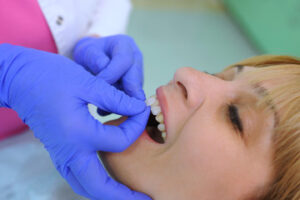Mesa restaurants cater to locals and tourists alike. From classic BBQ and fresh seafood to exotic fare that fuses nations and flavors, Mesa offers dynamic culinary experiences in unique venues.
Whether you want to replenish after a hike or cheer on your favorite team, these venues will surely delight you. Contact Tom’s BBQ now!

Among the most underrated restaurants in metro Phoenix is Jalapeno Bucks, a stand tucked inside a grove of 100-year-old orange trees in Mesa. An eatery is a place for pork that collapses with the faintest touch and peanut butter brisket. Its rotisserie Oyler smoker draws heat from Arizona red oak and pecan wood, which adds to the barbecue’s unique flavor. The meat is smoked for 24 hours, then sliced and served with sides of refried beans and Mexican rice. Despite its low-key, casual atmosphere, the restaurant attracts a steady stream of locals.
The menu at Jalapeno Bucks includes standard barbecue dishes like ribs, sandwiches, and brisket by the pound, but it also offers Mexican-inspired food such as burritos and quesadillas. The brisket sandwich is especially good, as it features grilled onions and peppers on a toasted bun. The sandwich is then slathered in “thunder sauce,” a homemade mayo-based spread made with butter and tangy vinegar. It’s also topped with crisp, savory fries.
There are several things that set Jalapeno Bucks apart from other traditional barbecue joints, including its location, which is located in a parking lot adjacent to B&B Citrus Farms. In addition to its brisket, the establishment serves chicken and beef tacos. The food is also served with a side of salsa, which can be ordered either mild or spicy.
If you’re looking for a fun way to spice up your meal, try one of Jalapeno Bucks’ jalapeno poppers. These bite-sized appetizers are filled with cream cheese and fried to perfection. They are sure to please any crowd, and they’re a perfect addition to any meal.
Another great option is Jalapeno Buck’s BBQ sauce, which is made with a blend of sweet and smoky flavors. This tangy and delicious sauce is the perfect finishing touch to any dish, and it can be used on everything from chicken to fish to vegetables. It’s also a great gift for any barbecue lover in your life.
Worth Takeaway
Worth describes their cuisine as “craft sandwiches.” There’s a strong emphasis on local purveyors, starting with the bread. The chewy ciabatta supports a variety of sandwiches that put their ratios of meat to cheese and vegetables into perfect alignment. The signature crispy chicken sandwich adds sweet and spicy pickles and honey Sriracha, while the Reuben features pastrami, coarsely cut sauerkraut and havarti cheese. The restaurant’s other mainstay, a roast beef on focaccia, also impresses.
The lunch menu is full of savory and sweet options, all made in-house. The scrumptious empanadas are stuffed with traditional Latin American fillings like slow-roasted pork and tender seasoned veggies, as well as more creative combinations like the Dizzy Fig featuring rich mozzarella, decadent dulce de leche, and juicy local figs.
There are also a number of other non-sandwich items on the menu, including creamy mac and cheese topped with Buffalo chicken, salads made with fresh seasonal greens, and a hearty Worth burger served only after four in the afternoon.
In addition to a robust lunch and dinner menu, Worth Takeaway offers brunch on the weekends. It’s a great place for families to enjoy a casual meal together.
Located just a block east of the Country Club / Main light rail station, Worth Takeaway is part of the city’s walkable downtown core. There are abundant bike racks nearby and a spacious patio that will eventually be used as a seating area. The restaurant is small, but they recently expanded to include a second dining room.
In addition to its popular dine-in and delivery service, Worth also has a takeout counter. Ordering is quick and easy, with the option to pre-order for pickup later.
The food in Mesa is incredibly diverse, with many different cultures making their mark on the city’s culinary scene. You can find anything from a traditional Mexican breakfast at restaurants like Jalapeno Bucks to New Wave Mexican soul food at Charleston’s. For those who prefer something a little more unique, try the Korean corn dogs at Two Hands or the authentic pho at Pho Thuan Thanh.
Republica Empanada
A gift card to Republica Empanada makes for a thoughtful gift. This restaurant offers a variety of delicious savory and sweet empanadas that are sure to satisfy any appetite. The restaurant is known for their fusion of Latin flavors and cozy atmosphere. It is the perfect place for anyone who loves to enjoy authentic cuisine and delicious cocktails.
The menu here is heavy on empanadas, with more than 20 savory creations on the menu ranging from traditional to unusual and costing around $3 each. There are also many options for vegetarians, as well as a vegan plate. There is even a salad that includes hearts of palm, avocado, chickpeas, boiled egg, and kale. A great fresh and tangy green salsa rounds out the meal.
Republica Empanada also serves a range of drinks, including coffee and tea. The bartenders are very knowledgeable and will recommend the best drink for your taste. The ambiance is warm and inviting, with beautiful murals and a large open patio.
In addition to the savory empanadas, Republica Empanada offers a number of other dishes, such as the Gallo Pinto, which features a mound of black beans and rice with chicken. Other popular items include the Achiote Potato, which is filled with a delicately earthy and lightly flavored mashed potato, and the Pernil, which is slow roasted pork. The menu also includes desserts, such as the Fig Cheese & Caramel and Nutella & Banana empanadas.
Marco Meraz, the general manager and son of the owners, says the restaurant’s focus will be on “pan Latin” or Latin American comfort food. Meraz plans to avoid Mexican cuisine, which is readily available in the area, in favor of focusing on South American and Central American fare.
Republica Empanada opened in June in a small space in downtown Mesa’s midcentury modern neighborhood. The restaurant serves breakfast, lunch, and dinner. Its location is convenient for travelers, being close to several light rail stations, including Center / Main and Mesa Drive. There are also bike racks located nearby. The restaurant is also accessible by bus routes, with the closest stop being at Hibbert and First Avenue.
Red White & Brew
If you are looking for a place to enjoy wine and beer, look no further than Red White & Brew. This restaurant is located on Power and McDowell and serves a variety of craft beers. They also offer delicious food. This is a great place to spend an evening with friends. The staff is very friendly and helpful. The prices are also very reasonable. They are open all through the week. The brewery also hosts events, such as their RED, WINE & BREW BASH. This event benefits the Andrew Husenica Scholarship Fund, which helps members of Haddonfield Memorial High School’s lacrosse team who exemplify Coach Huse’s dedication to others and achievements in the classroom and on the field.








